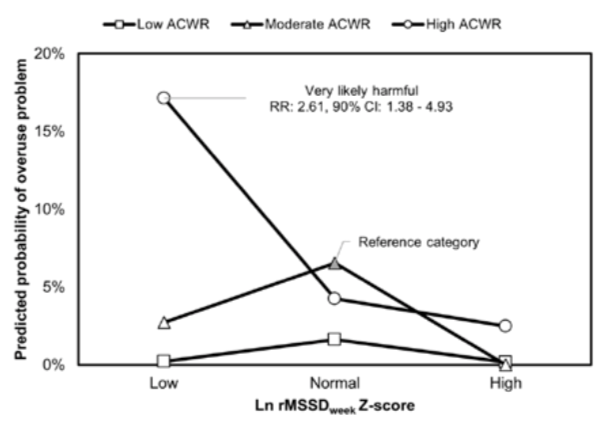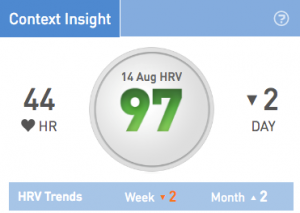Who, what & why?
CrossFit™ is a strength & conditioning program promoted both as a type of all-round exercise for the general population to keep fit, and as a fitness challenge for competitive athletes. Although undoubtedly effective in developing strength and fitness, CrossFit also has a reputation for overuse injuries, due to the fairly extreme demands of some of the exercises.
Researchers from the University of Bath, UK wanted to see whether monitoring Heart Rate Variability (HRV) alongside training loads could help predict the likelihood of injuries taking place.
What did they do?
They recruited 6 competitive CrossFit athletes (3 male, 3 female) and monitored them during a 16 week training period leading up to the CrossFit Open competition.
Data collected included:
- Training Load – RPE rating (1-10 scale) x no of training minutes per day
- HRV – a one minute measure in the lying down position every morning on waking
- Overuse injury – the athletes were asked to fill in a questionnaire every Sunday and rate the severity of any injuries to the knee, wrist, elbow, lower back, and shoulder
From these data, the researchers calculated Acute:Chronic training loads, HRV 7d rolling average, and overuse injury rates.
What did they find?
Four of the six athletes reported some form of overuse injury during the study, with the knee, lower back and wrist the most common injury locations.
Example HRV and Training Load data for two of the athletes is shown below:

There is a general pattern of a delayed reaction between periods of intensified training (denser vertical bars) and a reduction in weekly HRV, followed by a bounce back when training loads were reduced. The HRV is shown as 2xLnRMSSD, so multiply by 10 to get ithlete scores.
The story gets much more interesting though when the likelihood of injury is combined with this data, normalised per individual as follows:

What this insightful chart shows is that with weekly HRV in the normal range for an athlete, and their usual levels of training, the probability of overuse injury is about 7%.
However when Training Loads are increased substantially (Acute:Chronic workload > 1.6), chances of injury more than double (2.6x) if weekly HRV is low. It’s interesting to note that injury rates do not increase with Training Load, provided the weekly HRV is at normal level.
What does it mean?
Although this is the only study of this kind that we have seen, and it only included six athletes, these were all experienced competitors and were unlikely to have made beginners’ mistakes such as increasing Training Loads too rapidly without knowledge of possible consequences.

If the results can be generalised, they are extremely useful to athletes (or their Coaches) building up to competition. They imply that Training Loads can be increased beyond the ‘safe’ Acute:Chronic workload ratio of 1.5 provided that Weekly HRV stays in the normal range, but when Weekly HRV drops, loads must be reduced until Weekly HRV rebounds before further increases carry acceptable injury risk. The ithlete Pro and mobile apps have amber and red Week trend indications to allow you to identify when this is taking place.
by Simon Wegerif
Heart Rate Variability is a Moderating Factor in the Workload-Injury Relationship of Competitive CrossFit™ Athletes Sean Williams et al. ©Journal of Sports Science and Medicine (2017) 16, 443-449
